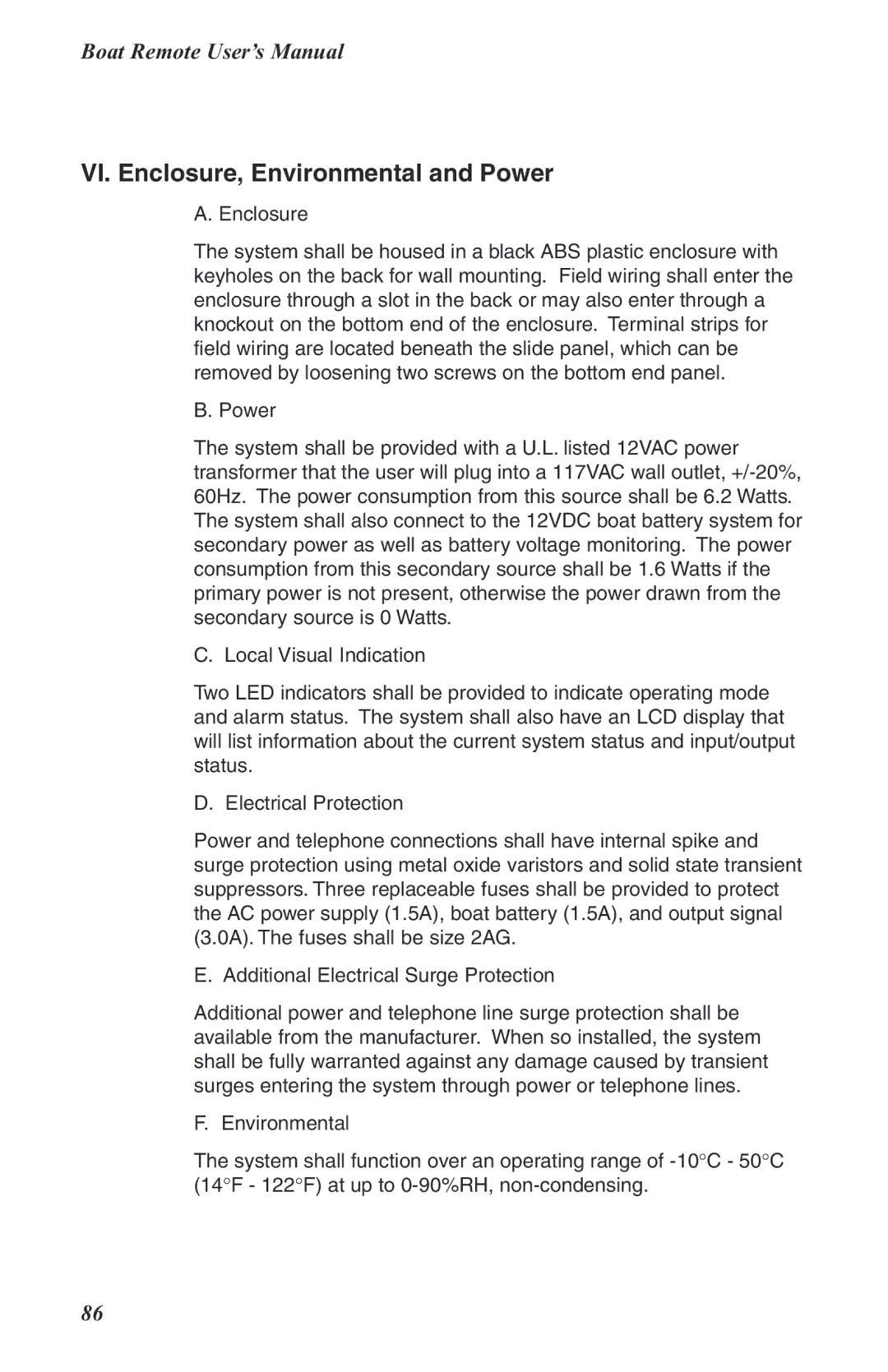Boat Remote User’s Manual
VI. Enclosure, Environmental and Power
A. Enclosure
The system shall be housed in a black ABS plastic enclosure with keyholes on the back for wall mounting. Field wiring shall enter the enclosure through a slot in the back or may also enter through a knockout on the bottom end of the enclosure. Terminal strips for field wiring are located beneath the slide panel, which can be removed by loosening two screws on the bottom end panel.
B. Power
The system shall be provided with a U.L. listed 12VAC power transformer that the user will plug into a 117VAC wall outlet,
C. Local Visual Indication
Two LED indicators shall be provided to indicate operating mode and alarm status. The system shall also have an LCD display that will list information about the current system status and input/output status.
D. Electrical Protection
Power and telephone connections shall have internal spike and surge protection using metal oxide varistors and solid state transient suppressors. Three replaceable fuses shall be provided to protect the AC power supply (1.5A), boat battery (1.5A), and output signal (3.0A). The fuses shall be size 2AG.
E. Additional Electrical Surge Protection
Additional power and telephone line surge protection shall be available from the manufacturer. When so installed, the system shall be fully warranted against any damage caused by transient surges entering the system through power or telephone lines.
F. Environmental
The system shall function over an operating range of
86
